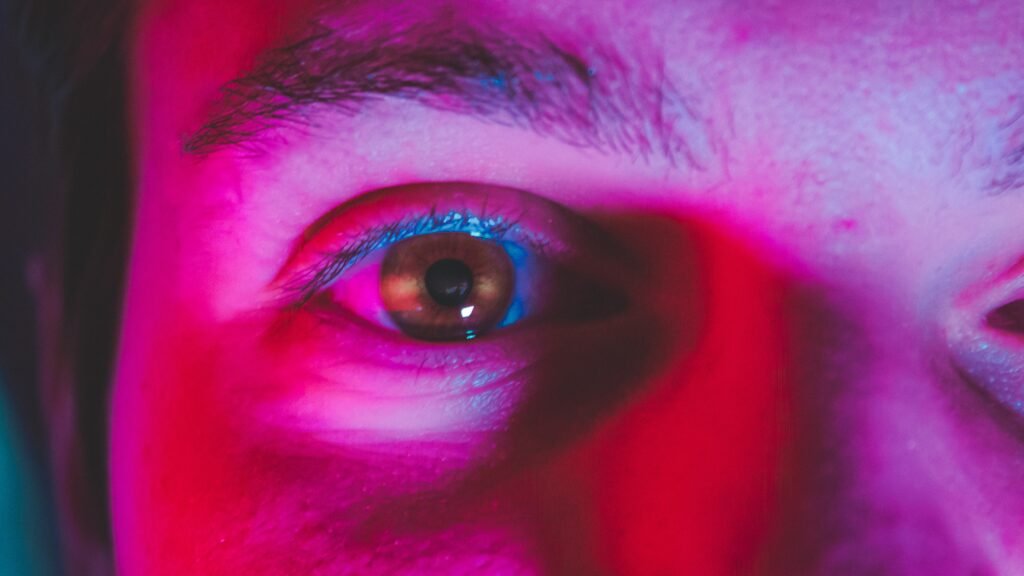Introduction to Lucid Dreaming
Lucid dreaming is an extraordinary state of sleep where you gain awareness that you’re dreaming. This realization allows you to consciously steer and shape your dream environment.
Unlike regular dreaming, a lucid dream gifts you the role of both the observer and the creator of your dream narrative.

How to lucid dream
Discover how to get started with lucid dreaming, and spend your sleeping hours exploring your very own realm of dreams.
The Wonders of Lucid Dreaming
Imagine a world where the impossible becomes possible. This is the realm of lucid dreaming—a place where you can fly or converse with historical figures.
When mastered, you can consciously influence the dream environment, create fantastical experiences, and overcome the confines of reality.
- Awareness and Control in Dreams: Gaining lucidity brings a profound sense of empowerment, enabling you to create and transform at will.
- Creative Freedom and Imaginary Experiences: The dream world becomes a limitless playground for your desires and creativity.
- Psychological and Personal Significance: Lucid dreaming often results in exhilarating experiences that can impart long-lasting positive effects on waking life.
The History of Lucid Dreaming
Lucid dreaming is not a new phenomenon. Its roots trace back thousands of years. The concept of conscious dreaming has been part of various cultures and spiritual practices worldwide.
Greek philosopher Aristotle even made early references to lucid dreams in his treatise “On Dreams”. He observed that often, while asleep, there was an awareness of the dream’s fictional nature—essentially, lucid dreaming.
Despite numerous historical references, lucid dreaming didn’t formally enter scientific discourse until the end of the 19th century. This was thanks to French sinologist Marquis d’Hervey de Saint Denys. He’s often credited as one of the pioneering researchers to seriously study and document his own lucid dreams.

However, it was Frederik van Eeden, a Dutch psychiatrist, who officially coined the term “lucid dream” in 1913.
Van Eeden published his own lucid dreams in a paper titled “A Study of Dreams” in 1913, which helped popularize lucid dreaming.
But it was not until the late 20th century that science lent validity to this phenomenon.
In 1975, British parapsychologist Keith Hearne successfully recorded a lucid dream, providing fist solid scientific evidence of its existence.
Over time, research on lucid dreaming has gained traction, offering
The Science of Lucid Dreaming
The phenomenon of lucid dreaming has been widely recognized and studied by the scientific community. This unique state of consciousness is characterized by a greater awareness during the dream phase, which research has shown can be induced and studied through various techniques and methodologies.
- Scientific Validation and Research: Lucid dreaming is not anecdotal; it has been confirmed through studies and can be developed with training.
- Exploring the Dream World Consciously: Lucid dreaming allows us to examine our perception and cognition in ways not available in our waking state.
- Techniques for Inducing Lucid Dreams: Effective strategies for inducing lucidity are varied and can include performing reality checks and intentional waking during the REM cycle.
- Relationship between Sleep and Lucidity: Understanding the sleep cycle, particularly the REM stage, is crucial in the practice of lucid dreaming.
Lucid dreams often occur during the REM (Rapid Eye Movement) stage of your sleep cycle when your brain activity is high, akin to being awake.
More specifically, lucid dreaming is associated with heightened activity in the frontal areas of the brain. These regions are linked with higher cognitive functions such as self-awareness and executive control – critical components of lucid dreaming.
Benefits of Lucid Dreaming
Lucid dreaming can be a transformative practice with benefits that extend into our waking lives. It offers a conduit for creativity, personal insight, and emotional catharsis.
- Enhancement of Waking Life: By learning to navigate and interact with the dream world, we can transfer problem-solving skills and creative insights to our daytime experiences.
- Emotional Processing and Resolution: Lucid dreaming becomes a unique setting to confront and reconcile with personal worries or conflicts.
- Personal Growth and Self-awareness: Frequent engagement with lucid dreams can deepen self-knowledge and foster personal growth.
- Improvement in Mental Skills and Practices: The dream state offers a realm for practicing and refining cognitive and creative abilities.

The benefits of lucid dreaming
Find out more about the numerous benefits of Lucid Dreaming.
Preparing for Lucid Dreaming
Preparing for lucid dreaming is about increasing dream awareness and recall capabilities. This grounding work is essential for recognizing and entering the lucid state.
- How to Enhance Dream Recall: Remembering your dreams is essential. Start by keeping a dream journal to track and reflect on your nocturnal adventures.
- Creating a Dream Journal: A dream journal is not just for recording dreams but is also a tool for identifying patterns that can trigger lucidity.
- Identifying Dreamsigns: Recognizing personal dreamsigns is the cornerstone to realizing you’re in a dream and thereby triggering lucidity.
Techniques and Practices for Lucid Dreaming
Now that you’re equipped with heightened dream awareness, you can employ specific techniques to initiate and sustain lucid dreams.
- Navigating the Dream World: Staying calm and focused within the dream will allow you to maintain lucidity in the dream environment.
- Reflection-Intention and MILD Techniques: Implement routines that question your reality—they will boost the likelihood of achieving lucidity.
- Direct Entry and Dream Control: Advanced techniques such as the “Wake-Initiated Lucid Dream” (WILD) enable seasoned dreamers to transition directly into dreaming.
| Name | Description |
|---|---|
| Reality Checks | Question your reality throughout the day to establish the habit of doing reality checks in your dreams. |
| Dream Journaling | Consistently record your dreams in a journal to improve dream recall and identify dream signs. |
| SSILD | Wake up briefly during the night and cycle through your senses to increase your chances lucidity. |
| WBTB | Wake up briefly during the night, then go back to sleep, increasing chances of a lucid dream. |
| FILD | Gently move your fingers as you fall asleep to enter a lucid dream when your mind remains aware. |
| MILD | Use affirmations and visualization to set intentions for recognizing you’re dreaming. |
| DILD | Achieve lucidity within a dream by recognizing dream signs or unusual occurrences. |
| WILD | Enter a lucid dream directly from wakefulness while maintaining awareness as your body falls asleep. |

Lucid dreaming techniques
Read detailed guides for each lucid dreaming technique, and get my tips on how to get started tonight.
Applications of Lucid Dreaming
Lucid dreaming is not just an exciting journey but also a strategic tool for personal fulfillment and self-improvement.
- Wish Fulfillment and Exploring Desires: The dream world offers a risk-free environment to satisfy your deepest desires and yearnings.
- Rehearsal for Real-Life Situations: Practice and perfect real-life scenarios within the dream world to enhance your waking performance.
- Addressing Nightmares and Fears: By confronting fearful dreams with a lucid mind, you can dismantle anxieties and foster resilience.
- Healing and Therapeutic Uses: Lucid dreaming has therapeutic potentials, from resolving deep-seated conflicts to promoting psychological healing and well-being.
Philosophical and Transcendental Aspects
Lucid dreaming opens the door to existential exploration and philosophical ponderings about the nature of reality and consciousness.
- Lucid Dreaming and the Notion of Reality: The lifelike vividness of lucid dreams challenges our conventional concepts of what is real.
- Insights into Personal Identity: The fluidity of the dream self can lead to profound understanding and possible reconfiguration of the waking self.
- Transcendental Experiences and Their Implications: Lucid dreams can be the medium for experiences that transcend the mundane, offering glimpses into a more unified and interconnected existence.
Frequently asked questions
With something as intriguing as lucid dreaming, it’s natural for many questions to arise. Answering some of the most frequent inquiries can help dispel misconceptions and shed light on the subject.
While there are potential risks, most people can practice lucid dreaming safely with proper techniques and sensible routines.
While some can gain extensive control, others might just be aware they’re dreaming but unable to control the environment.
With practice and the correct approach, most people can experience lucid dreaming. However, the degree and frequency of lucidity can vary significantly from person to person.
Myths and Misconceptions
With something intriguing there is always a degree of myths and misconceptions, lets check out the most common ones.
Despite dramatic portrayals in films, getting ‘trapped’ in a dream is not something that happens. Dreams, including lucid ones, are a natural part of the sleep cycle.
Although some techniques might indeed briefly disrupt sleep, overall, lucid dreaming does not inherently affect sleep quality negatively.
Lucid dreaming is a skill that can be learned and practiced by anyone. While some people may naturally experience it more frequently, there are techniques and exercises, such as reality checks and keeping a dream journal, that can help individuals increase their chances of having lucid dreams, even if they are not experienced dreamers.
Conclusion
Lucid dreaming is a testament to the potential of the human mind— a practice that comes with wonder, insight, and an expanded consciousness.
It is not just about the experience, but about enriching the tapestry of our waking life. Embrace this path of exploration and discovery, and watch as the boundaries of reality and dreaming beautifully merge.
